Can magazine covers really help you time the market... and beat the performance of most hedge fund managers?… Here’s what the data says... Plus, three recent covers I’m taking the opposite side on...
It’s every investor’s dream…
Find a magic indicator that reliably times market tops and bottoms.
Wall Street banks spend billions of dollars a year trying to find it. But such a tool has eluded even the greatest investment minds in history.
What if I told you the closest thing to such an indicator has been hiding in plain sight the whole time?
And that by making a few simple trades a year off this indicator and ignoring everything else happening in the markets, you could beat the performance of most hedge fund managers?
- Ever read The Economist?
The Economist is one of the most widely read financial magazines in the world. It’s been published weekly since 1843.
But that doesn’t mean it’s a profitable tool for investors. In fact, it usually pays to do the exact opposite of what its cover stories suggest.
Take this Economist cover from last July:
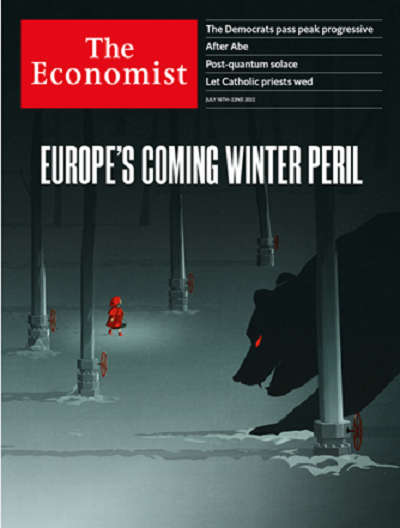
Last summer, the headlines said Europeans like me would freeze to death this winter due to surging natural gas costs related to the Russia-Ukraine war.
Although my energy bill roughly tripled over the past year, I’m happy to report I haven’t frozen to death, yet.
Natural gas prices in Europe were setting record levels when The Economist published this story. The US Natural Gas ETF (UNG) was at its highest levels since 2018.
That was the absolute top. If you bought the US Natural Gas ETF then, you lost 2/3rds of your money over the next six months.
- The Economist has an almost supernatural ability to nail the tops and bottoms of MAJOR trends…
But not in a good way.
When The Economist writes a glowing cover story about a certain asset or country, it’s usually time to sell. The opposite is also true.
The Economist thinks some investment is doomed? Time to buy.
Take these two Brazil-themed covers from 2009 and 2016:
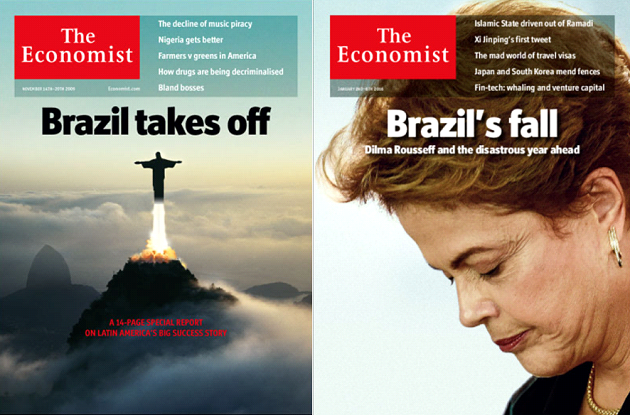
The Economist was all bulled up on Brazil in 2009. If you bought the iShares’s Brazil ETF (EWZ) then, you lost roughly half of your money over the following five years. Oops!
You would have fared much better buying EWZ in 2016 when Brazil was supposed to be headed for a “disastrous year ahead.” In fact, this negative cover marked the exact bottom for Brazilian stocks.
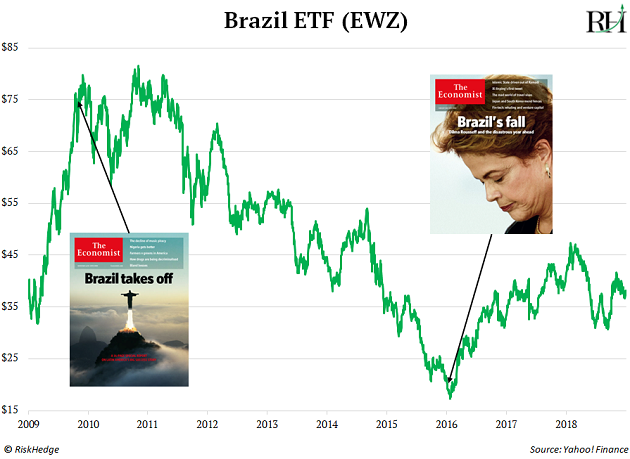
- And then there’s my all-time favorite magazine cover…
In October 2003, The Economist declared “The end of the Oil Age.”
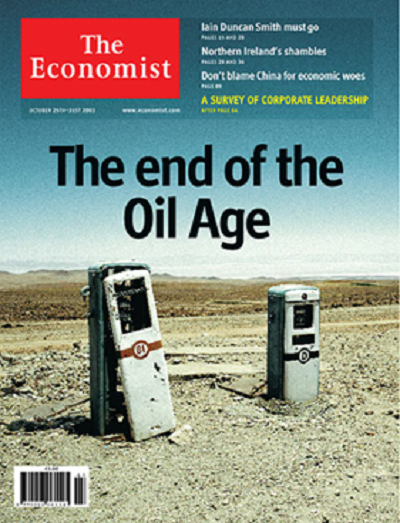
Oil was trading around $25/barrel at the time.
As we know, oil then entered an all-time boom. The price of oil 5X’d over the next five years to a record $145/barrel.
You could have made five times your money betting against The Economist.
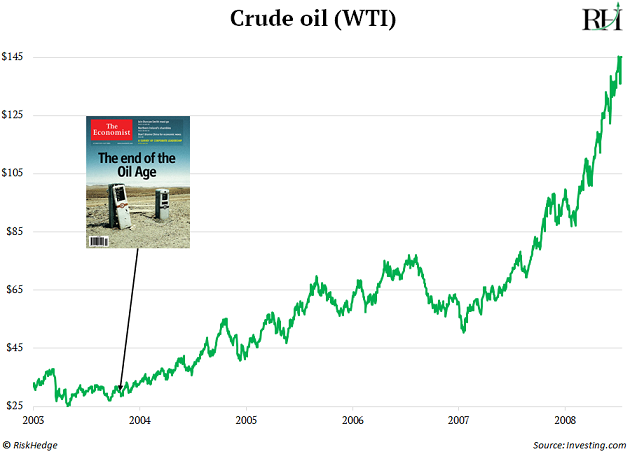
- And it’s not just The Economist... Popular financial magazine covers tend to be the ultimate contrarian indicators…
When Facebook IPO’d in 2012, Barron’s wasn’t convinced its business model of selling internet ads was sustainable.
Barron’s published this gem when Facebook was trading around $21/share in September 2012:
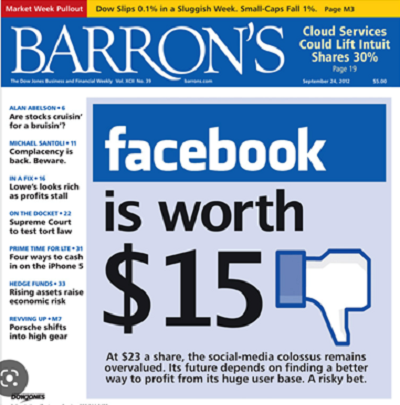
Selling online ads turned into one of the most profitable businesses the world had ever seen. Facebook’s stock ripped higher over the next decade, from $15 to $200+. Yet again, you would have made many times your money doing the opposite of what a magazine cover suggested.
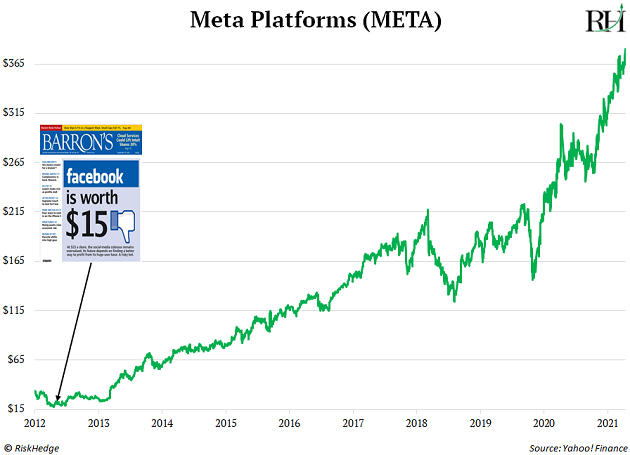
- Did Fortune predict the housing crash?
Americans were making money hand over fist flipping houses back in 2005.
The price of the average US home had doubled over the previous 15 years. Real estate agents were getting rich and retiring at 40.
Fortune called it the “Real Estate Gold Rush” in the summer of 2005.

We all know the gold rush ended in total calamity soon after. US home prices started to slump less than a year after this cover.
It marked the tippy-top for homebuilder stocks like DR Horton (DHI), too.
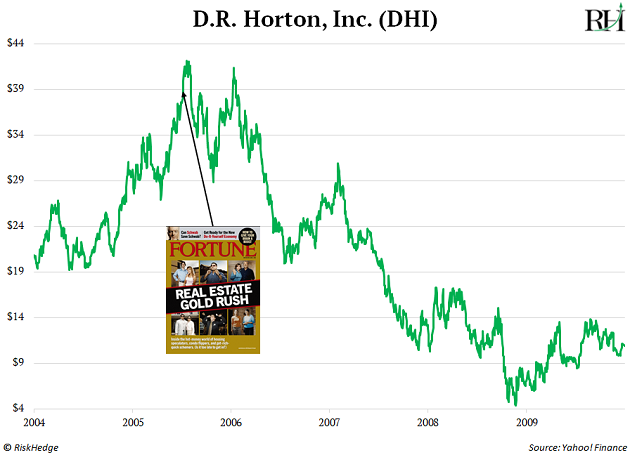
- When a CEO appears on the cover of Time, dump their stock.
Time’s iconic red borders make it one of the most recognized magazines in the world.
It has a long-standing annual tradition where it anoints a Person of the Year. This is another great contrarian indicator for investors.
When the CEO of a public company is named Person of the Year, it’s time to sell.
Time named Amazon CEO Jeff Bezos Person of the Year in 1999. This marked the top of the dot-com bubble.
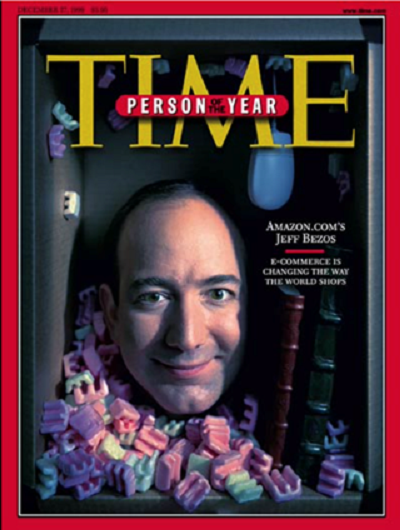
Amazon was selling for $3.80/share the day that issue hit the shelves. Its stock plunged more than 90% over the next two years and wouldn’t trade at those “highs” again until 2007.
Time anointed Elon Musk the king of 2021. Here’s how Tesla’s stock performed since then:
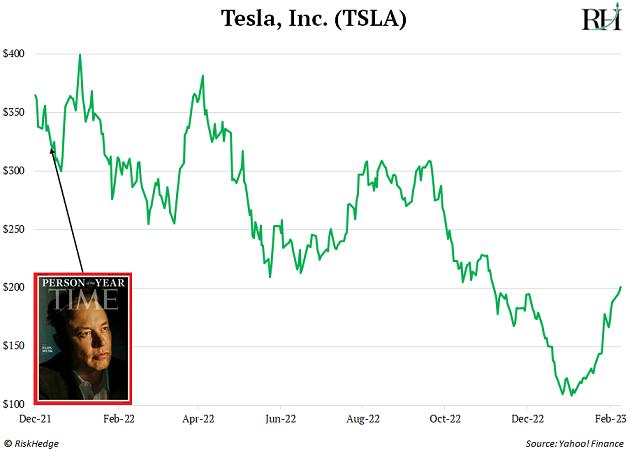
- Stephen… are you just cherry-picking examples?
The Economist, Time, and other magazines published thousands of cover stories over the past two decades. Of course, not all of them would have led to money-losing trades.
However...
Two Citibank analysts studied the magazine indicator and found most of the time, it pays to bet against the “journos.”
The pair took roughly 50 Economist covers from the past 25 years which covered a certain asset, theme, or country in a positive or negative light.
They found 68% of all covers were “wrong” one year after publication.
If you set up a trading system simply to take the opposite view of Economist covers, you would have outperformed most hedge fund managers.
Buying assets which The Economist wrote negatively about would have returned 18% in profits over the following year, on average.
Shorting assets that appeared on a positive cover would have generated average returns of 8% over the next 12 months.
- Why are magazine covers such a good contrarian indicator?
Folks usually pay attention to an asset only after it has surged in price.
By the time it makes it to the front cover of The Economist, a majority of the move has likely already happened.
There are few buyers left to come in and drive prices higher. Meaning we’re usually at the end, not the beginning, of a big runup.
And don’t forget: These journalists are just doing their job. They’re not investors. Most of the time, they write about what’s hot in the markets. That’s how you sell issues and subscriptions.
But now you know...
Next time an asset you’re invested in appears on the front of The Economist, take a pause. It usually pays to do the opposite of what they suggest!
- What’s in the magazines these days?
They hate crypto:
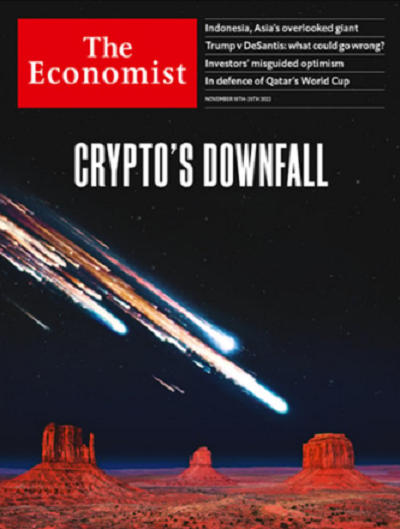
They love green energy:
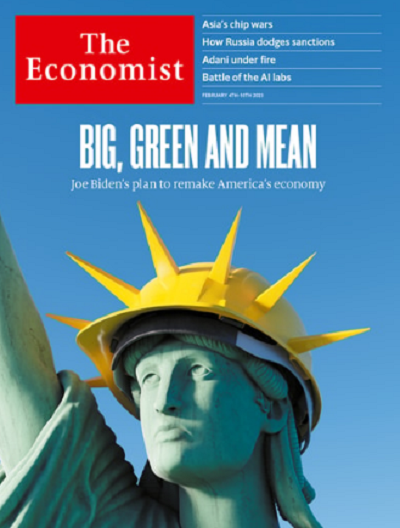
Any of course, they’re certain that 2023 will be a very difficult year for investors, just like 2022:
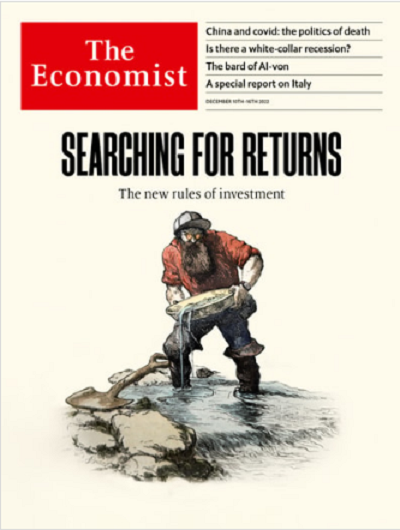
I’ll take the opposite side on all three.
You?
Let me know at stephen@riskhedge.com.
Stephen McBride
Chief Analyst, RiskHedge



